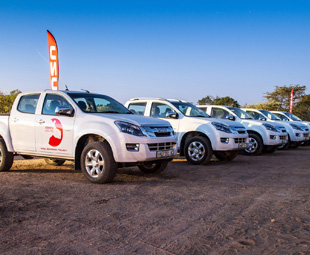Isuzu and Nkombe Rhino continue battle against poaching

In three days, Isuzu and Nkombe Rhino, a non-profit organisation dedicated to wildlife conservation, have successfully dehorned 24 rhinos in the Blue Canyon Conservancy.
The dehorning process is part of an integrated anti-poaching strategy, which includes educating communities around the reserve, media exposure to highlight the effects of rhino poaching and, at the same time, informing potential poachers that the animals in the area have been dehorned.
This process takes place every 18 to 24 months as the horns grow quite rapidly. The conservancy is situated in Hoedspruit in the Limpopo Province, which is the epicentre of the rhino poaching epidemic … here, incidents of poaching occur on a daily basis.
“Removing the rhino’s most distinctive feature, along with educating local communities and dissemination of information, form part of the measures used to slow the poaching pandemic,” says Brian Olson, vice-president vehicle sales, service and marketing at General Motors Sub-Saharan Africa.
“It has been proved that this process works: for example, dehorned Rhinos in certain Zimbabwean conservancies appear to have a 29 percent better chance of surviving than horned animals. Previous operations in the Blue Canyon Conservatory have also resulted in a dramatic decline in poaching.”
The process involves finding the rhino and tranquilising it from a helicopter. Once the tranquiliser dart has taken effect, the horns are removed by an experienced team, led by wildlife veterinarian Dr Peter Rodgers. The team takes great care not to get too close to the sensitive area at the base of the horn.
Isuzu provided financial support, as well as a fleet of KB300 4×4 double-cab bakkies as support vehicles in the operation to track and dart the animals.
The need to curb rhino horn poaching has grown significantly in the last few years, with an estimated 5 500 rhinos slaughtered in South Africa between 2008 and 2015.
Poaching estimates of 1 800 this year and 2 153 in 2017 suggest that the situation will get worse before it gets better. If next year’s projection is correct, it will mean that annual rhino deaths will have almost doubled since 2014.
Published by
Focus on Transport
focusmagsa




